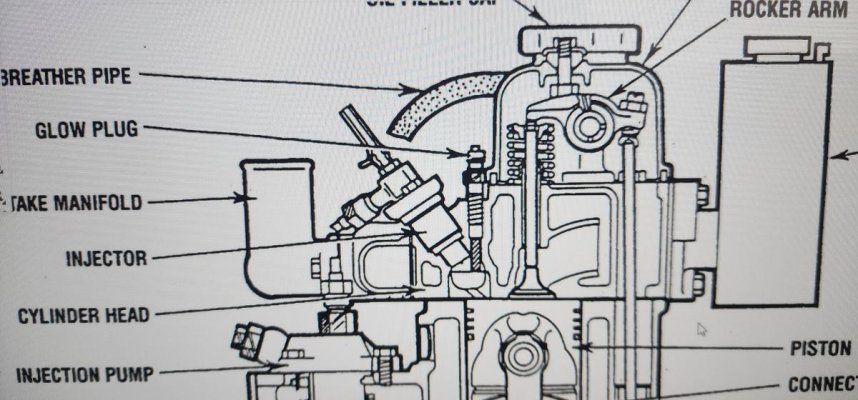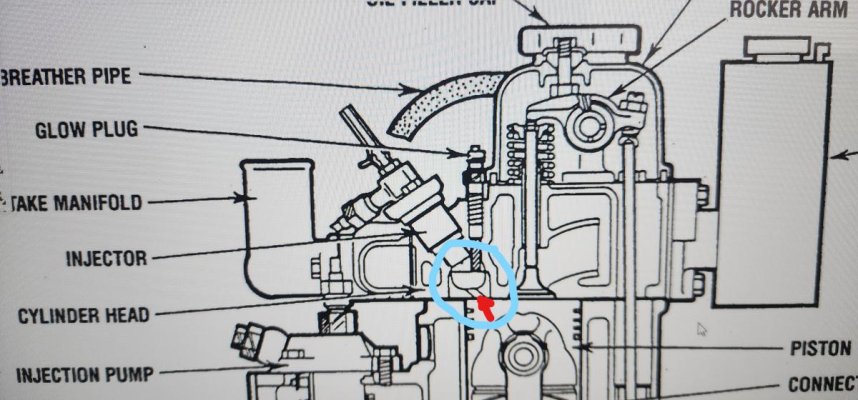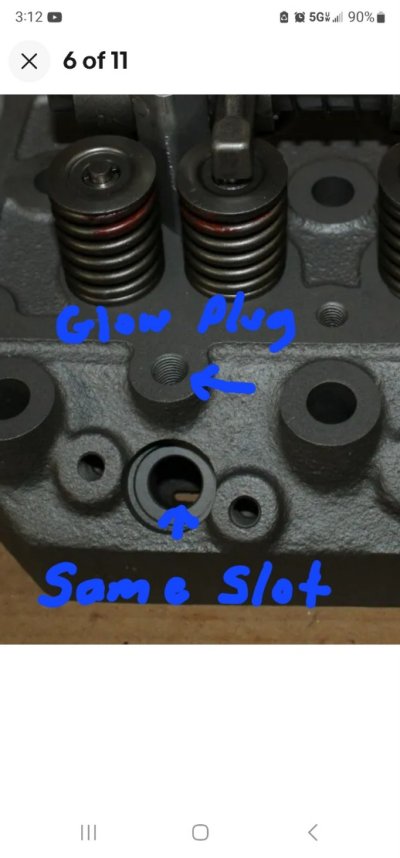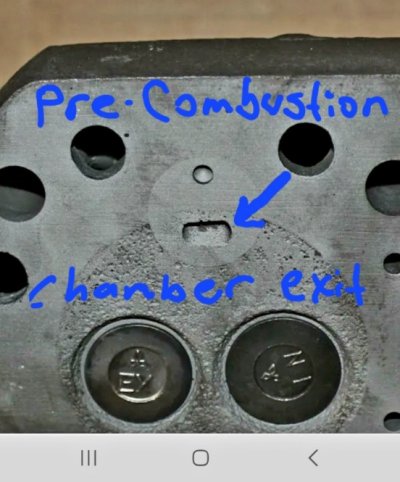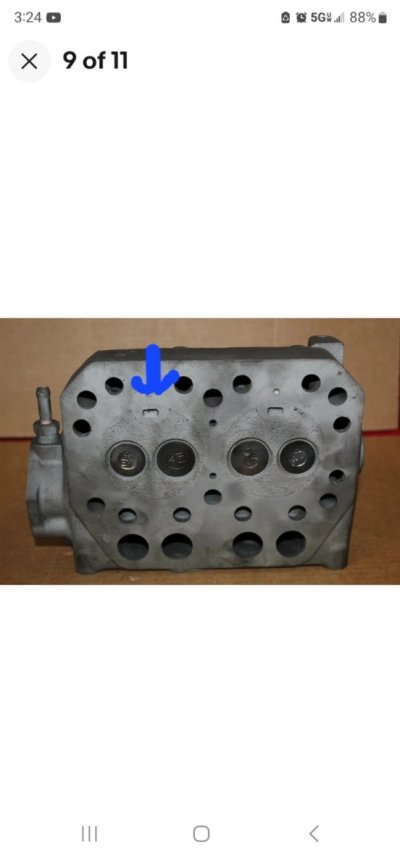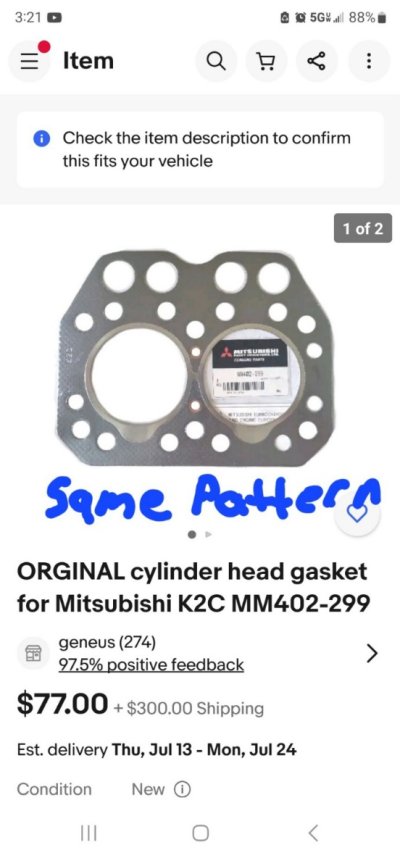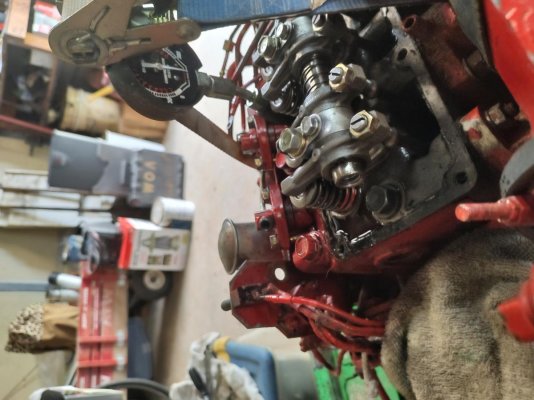Yeah , well it's hard not to look at a hole blowing air at you. I strapped the gauge down with a ratchet strap. Pay attention here- both injectors were IN.
Both glow plugs were OUT. comp gauge in one inj hole . Cranked. Zero on gauge, air blowing out of OTHER inj hole when cranked. Sounds like (at least) head gasket blown between cyls
OK brother. I am paying attention now.

Pay attention here- both injectors were IN.
Both glow plugs were OUT.
comp gauge in one inj hole .
Did you mean to say that the compression gauge was in the glow plug hole? Because in the first sentence you said both injectors were in. Cant install the compression gauge in an injector hole with an injector in it. Please clarify.
Cranked. Zero on gauge, air blowing out of OTHER inj hole when cranked.
What other hole? If you are talking about the adjacent cylinder dont worry about that. There should be no open holes in the cylinder you are testing.
Sounds like (at least) head gasket blown between cyls
It does not sound like a blown gasket between the two cylinders
from the info you provide here. If you have both injectors fully installed on both cylinders and both glow plug holes open, and you plug one cylinders glow plug hole with the compression gauge it would be completely normal for the opposing cylinder to have a MASSIVE amount of air coming out of the opposing cylinders open glow plug hole because the opposing cylinders piston is pumping and attempting to compress air as well.
If you were doing a
leakdown test in a particular cylinder with shop air and you had air coming out the opposing cylinder glow plug hole then THAT would be evidence of a blown head gasket.
You may well have a blown head gasket. But so far from your responses I am just not sure the compression test is being done right. And with parts for this particularly rare model being so scarce and expensive I would want to check, double check and then think about it, and then triple check all these troubleshooting items prior to disassembly.
You say you got 0 psi on the compression test. There is only one time I ever got 0 on a compression test. That was on an Onan twin cylinder opposed gas motor in a small tractor I purchased on a whim. Dang thing still ran half way decent. Got it home and started troubleshooting thinking ignition. Well after fixing the ignition issue still no luck. Noticed with the plug out very little air coming out plug hole. Hooked up compression gauge and got just a bump on the needle (from opposing cylinders windage into oil pan) Pulled off the head and there was no piston at all:lol:
It was in the bottom of the oil pan

Other than that, when you get 0 on a compression test you should suspect your process or equipment. Blown head gaskets and stuck rings still get some amount of compression, especially on an engine that should see 450 psi. I have had gauges, especially if using the rubber tip that would not allow air in due to blockage or squeezing of the rubber tip too tight or the check valve sticking. In that case you take your compression tester and get it to register on a known good air source until you are satisfied and then repeat the test on the motor.
Anyways..I hope I am not leading you astray. Pulling it apart for inspection is certainly an option. But I was hoping to see you get some solid, repeatable data via a compression test or a leakdown test that might help guide the process. Good luck brother.
FYI- On the generator end there are several tests in the manual to check serviceability of the large expensive parts using an ohm meter.

